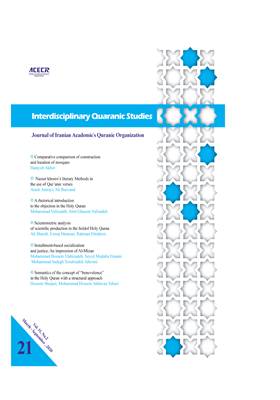Society building based on Qist and Adl; An impression of Al-Mizan
Subject Areas : Quran and ManagmentMohammad Sadiq Torabzadeh Jahromi 1 , Seyyed Mojtaba Emami 2 , محمد حسین الهی زاده 3
1 - Imam Sadiq University, peace be upon him
2 - emamsagegh univercity
3 - Razavi's field and Islamic sciences
Keywords: Qist, Adl, society building, social justice, spirituality, consolidation, kinship,
Abstract :
Social justice is the basic basis of creation of society in religious thought. But what is society building software in the light of social justice? Understanding this software is not possible without achieving a precise Qur'anic concept of social justice. This is why Islamic researches in the field of social justice has been often imposed by the preliminary or incomplete meaning of scholars of Adl and Qist in theory buildings, and the principle and sub-principle have become obscure. In this article, first, based on the thematic research method, we deal with the conceptology of Adl and Qist, and the relationship between the two. Then, in the light of this conceptology, with reference to Al-Mizan interpretation, an attempt has been made to develop a society building software based on Qist and Adl. Accordingly, society building is achieved through the consolidation of religion, which itself operates in the light of the three key components of power, wealth, and social ties. Social ties are the most fundamental layer of society building that economic relations are defined in the service of strengthening these ties and social cohesion. The political system and the institution of power, as the regulator of socio-economic relations, themselves need an internal consolidation based on obedience. Also, the component of spirituality as the fourth component, as a spirit on the body of society building, puts social justice in the service of monotheism.


